The Sensing Liver: Localization and Ligands for Hepatic Murine Olfactory and Taste Receptors
- PMID: 33123030
- PMCID: PMC7573564
- DOI: 10.3389/fphys.2020.574082
The Sensing Liver: Localization and Ligands for Hepatic Murine Olfactory and Taste Receptors
Abstract
Sensory receptors, including olfactory receptors (ORs), taste receptors (TRs), and opsins (Opns) have recently been found in a variety of non-sensory tissues where they have distinct physiological functions. As G protein-coupled receptors (GPCRs), these proteins can serve as important chemosensors by sensing and interpreting chemical cues in the environment. We reasoned that the liver, the largest metabolic organ in the body, is primed to take advantage of some of these sensory receptors in order to sense and regulate blood content and metabolism. In this study, we report the expression of novel hepatic sensory receptors - including 7 ORs, 6 bitter TRs, and 1 Opn - identified through a systematic molecular biology screening approach. We further determined that several of these receptors are expressed within hepatocytes, the parenchymal cells of the liver. Finally, we uncovered several agonists of the previously orphaned hepatic ORs. These compounds fall under two classes: methylpyrazines and monoterpenes. In particular, the latter chemicals are plant and fungal-derived compounds with known hepatic protective effects. Collectively, this study sheds light on the chemosensory functions of the liver and unveils potentially important regulators of hepatic homeostasis.
Keywords: liver; olfactory receptors; pyrazine; taste receptors; terpene.
Copyright © 2020 Kurtz, Steinberg, Betcher, Fowler and Shepard.
Figures
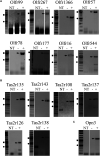
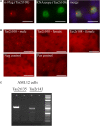
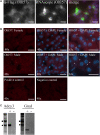
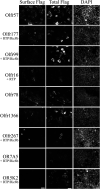

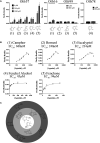
Similar articles
-
Olfactory, Taste, and Photo Sensory Receptors in Non-sensory Organs: It Just Makes Sense.Front Physiol. 2018 Nov 27;9:1673. doi: 10.3389/fphys.2018.01673. eCollection 2018. Front Physiol. 2018. PMID: 30542293 Free PMC article. Review.
-
Targeting Odorant Receptors in Adipose Tissue with Food-Derived Odorants: A Novel Approach to Obesity Treatment.Foods. 2024 Dec 6;13(23):3938. doi: 10.3390/foods13233938. Foods. 2024. PMID: 39683011 Free PMC article. Review.
-
Comparing Class A GPCRs to bitter taste receptors: Structural motifs, ligand interactions and agonist-to-antagonist ratios.Methods Cell Biol. 2016;132:401-27. doi: 10.1016/bs.mcb.2015.10.005. Epub 2015 Dec 24. Methods Cell Biol. 2016. PMID: 26928553
-
Roles of sensory receptors in non-sensory organs: the kidney and beyond.Nat Rev Nephrol. 2025 Apr;21(4):253-263. doi: 10.1038/s41581-024-00917-y. Epub 2025 Jan 3. Nat Rev Nephrol. 2025. PMID: 39753689 Review.
-
Bitter Taste and Olfactory Receptors: Beyond Chemical Sensing in the Tongue and the Nose.J Membr Biol. 2021 Aug;254(4):343-352. doi: 10.1007/s00232-021-00182-1. Epub 2021 Jun 25. J Membr Biol. 2021. PMID: 34173018 Free PMC article.
Cited by
-
Modeling the Orthosteric Binding Site of the G Protein-Coupled Odorant Receptor OR5K1.J Chem Inf Model. 2023 Apr 10;63(7):2014-2029. doi: 10.1021/acs.jcim.2c00752. Epub 2023 Jan 25. J Chem Inf Model. 2023. PMID: 36696962 Free PMC article.
-
IκBNS-deficiency protects mice from fatal Listeria monocytogenes infection by blunting pro-inflammatory signature in Ly6Chigh monocytes and preventing exaggerated innate immune responses.Front Immunol. 2022 Dec 22;13:1028789. doi: 10.3389/fimmu.2022.1028789. eCollection 2022. Front Immunol. 2022. PMID: 36618344 Free PMC article.
-
Effects of fasting and inflammatory challenges on the swine hepatic metabolome.Comp Biochem Physiol Part D Genomics Proteomics. 2025 Jun;54:101429. doi: 10.1016/j.cbd.2025.101429. Epub 2025 Jan 24. Comp Biochem Physiol Part D Genomics Proteomics. 2025. PMID: 39889585 Free PMC article.
-
Coffee reduces the risk of hepatocellular carcinoma probably through inhibition of NLRP3 inflammasome activation by caffeine.Front Oncol. 2022 Oct 18;12:1029491. doi: 10.3389/fonc.2022.1029491. eCollection 2022. Front Oncol. 2022. PMID: 36330474 Free PMC article. No abstract available.
-
Controlled release of hydrogel-encapsulated mesenchymal stem cells-conditioned medium promotes functional liver regeneration after hepatectomy in metabolic dysfunction-associated steatotic liver disease.Stem Cell Res Ther. 2024 Nov 4;15(1):395. doi: 10.1186/s13287-024-03993-w. Stem Cell Res Ther. 2024. PMID: 39497124 Free PMC article.
References
-
- Abaffy T., Bain J. R., Muehlbauer M. J., Spasojevic I., Lodha S., Bruguera E., et al. (2018). A testosterone metabolite 19-hydroxyandrostenedione induces neuroendocrine trans-differentiation of prostate cancer cells via an ectopic olfactory receptor. Front. Oncol. 8:162 10.3389/fonc.2018.00162 - DOI - PMC - PubMed
-
- Bell M., Wang H., Chen H., McLenithan J. C., Gong D. W., Yang R. Z., et al. (2008). Consequences of lipid droplet coat protein downregulation in liver cells: abnormal lipid droplet metabolism and induction of insulin resistance. Diabetes Metab. Res. Rev. 57 2037–2045. 10.2337/db07-1383 - DOI - PMC - PubMed
Grants and funding
LinkOut - more resources
Full Text Sources
Molecular Biology Databases
Research Materials

